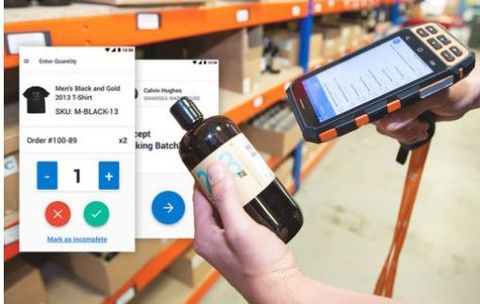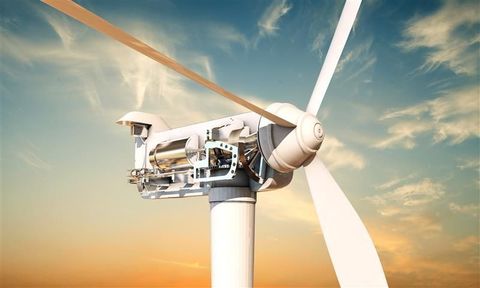Learn the Basics of Smart Factories and Industrial Automation Technologies
The world of manufacturing is undergoing a rapid transformation, powered by smart factories and industrial automation technologies. As industries embrace Industry 4.0, automation, data integration, and artificial intelligence are reshaping production lines to achieve unprecedented levels of efficiency, accuracy, and productivity. This comprehensive guide explores the fundamentals of smart factories, their key technologies, benefits, and the future of industrial automation.

What Is a Smart Factory?
A smart factory is a highly digitalized and connected production facility that uses advanced technologies to improve manufacturing processes. Through automation, data analytics, IoT (Internet of Things), and AI-driven decision-making, smart factories operate with minimal human intervention while maximizing efficiency and flexibility.
In essence, smart factories represent the next evolution of traditional manufacturing—where machines, systems, and humans collaborate seamlessly in real time. These factories can analyze data, learn from patterns, and autonomously optimize operations to reduce costs and increase output.
The Evolution of Industrial Automation
Industrial automation has evolved over several decades, from simple mechanical systems to fully autonomous smart operations.
-
Industry 1.0: Introduction of mechanization through water and steam power.
-
Industry 2.0: Mass production enabled by electricity and assembly lines.
-
Industry 3.0: Adoption of computers and programmable logic controllers (PLCs).
-
Industry 4.0: Integration of IoT, AI, robotics, and big data analytics into a unified ecosystem known as the smart factory.
Today, Industry 4.0 technologies are leading a revolution that combines cyber-physical systems with digital intelligence to create self-optimizing production environments.
Key Technologies Behind Smart Factories
1. Internet of Things (IoT)
IoT forms the backbone of smart manufacturing. It connects machines, sensors, and systems across the production floor, allowing real-time data exchange and monitoring. IoT-enabled devices collect information about performance, temperature, vibration, and efficiency, enabling predictive maintenance and better decision-making.
2. Artificial Intelligence (AI) and Machine Learning (ML)
AI and ML algorithms process large datasets to identify trends, optimize operations, and predict failures before they occur. In smart factories, AI is used for quality control, demand forecasting, and production optimization, minimizing waste and maximizing output.
3. Robotics and Automation Systems
Modern robotics are central to industrial automation. Collaborative robots (cobots) work alongside humans to perform repetitive, dangerous, or precision-based tasks. Automated guided vehicles (AGVs) and robotic arms streamline assembly lines, improving safety and productivity.
4. Big Data and Analytics
Smart factories generate massive amounts of data. Big data analytics tools interpret this data to uncover insights that improve efficiency, reduce downtime, and optimize supply chains. Real-time analytics enable faster, data-driven decisions.
5. Cloud Computing
Cloud platforms store and manage production data, making it accessible from anywhere. They support remote monitoring, scalability, and integration with enterprise systems, enabling manufacturers to manage operations globally.
6. Cybersecurity Solutions
As connectivity increases, so do security risks. Smart factories implement robust cybersecurity protocols to protect networks, data, and production systems from potential threats and breaches.
7. Digital Twin Technology
A digital twin is a virtual replica of a physical system, allowing manufacturers to simulate, monitor, and optimize operations in real time. It helps predict system behavior, test new processes, and reduce production risks.
Benefits of Smart Factories
The shift to smart factories offers numerous advantages for modern industries:
-
Enhanced Efficiency: Automation reduces manual intervention, improving accuracy and output.
-
Predictive Maintenance: Sensors and analytics detect issues before they cause downtime.
-
Cost Reduction: Optimized resource usage and minimal waste lower operational costs.
-
Improved Product Quality: AI-driven inspection ensures consistent, high-quality output.
-
Flexibility: Factories can adapt quickly to changes in demand or product design.
-
Sustainability: Energy-efficient operations reduce carbon emissions and waste.
-
Real-Time Monitoring: Managers gain visibility into every stage of production, improving decision-making.
Smart factories not only streamline production but also create sustainable and agile ecosystems capable of thriving in global competition.
Applications of Industrial Automation Technologies
1. Automotive Industry
Automation in the automotive sector enables precision assembly, robotics welding, and autonomous quality control. Manufacturers like Toyota and BMW use smart systems to monitor vehicle production in real time.
2. Electronics Manufacturing
Smart factories play a crucial role in electronics production, where AI-driven inspection systems and robotic precision tools ensure micro-level accuracy.
3. Food and Beverage Industry
Automation ensures consistent quality, hygiene, and traceability in food processing and packaging. IoT systems monitor temperature and safety throughout the supply chain.
4. Pharmaceutical Industry
In pharmaceuticals, smart technologies facilitate batch control, data logging, and compliance with strict regulatory standards such as FDA and GMP.
5. Energy and Utilities
Automation systems optimize power generation, grid management, and equipment maintenance, improving energy efficiency and sustainability.
How Smart Factories Operate
A smart factory integrates multiple layers of technology into one intelligent ecosystem:
-
Data Collection: Sensors and IoT devices gather information across machines and processes.
-
Data Processing: AI and analytics tools convert raw data into actionable insights.
-
Decision-Making: Systems autonomously adjust workflows based on performance metrics.
-
Execution: Robots and automated systems perform operations efficiently.
-
Feedback Loop: Continuous monitoring enables self-optimization for ongoing improvement.
This cycle of data, analysis, and adaptation defines the intelligent nature of a smart factory.
Challenges in Implementing Smart Factory Technologies
Despite their benefits, smart factories face several challenges:
-
High Initial Costs: Advanced technology integration requires substantial investment.
-
Skill Gaps: Workforce training is essential for managing digital and automated systems.
-
Cybersecurity Risks: Increased connectivity opens potential security vulnerabilities.
-
Data Integration Issues: Combining legacy systems with modern technology can be complex.
-
Regulatory Compliance: Meeting industry standards and data privacy laws requires careful planning.
Addressing these challenges is essential to fully leverage the potential of industrial automation.
The Future of Smart Factories and Automation
The future of manufacturing lies in hyperautomation, where AI, IoT, robotics, and edge computing converge to form self-evolving industrial ecosystems. Upcoming trends include:
-
5G Connectivity: Faster data transmission for real-time control and analytics.
-
Edge Computing: Local data processing for reduced latency.
-
Autonomous Production Lines: Fully self-regulated systems requiring minimal oversight.
-
Sustainable Manufacturing: Integration of renewable energy and circular economy models.
-
Human-Machine Collaboration: Intelligent interfaces that enhance workforce productivity.
As technology continues to advance, the smart factory of tomorrow will be more autonomous, resilient, and sustainable than ever before.
Conclusion
Smart factories and industrial automation technologies are transforming global manufacturing by blending intelligence, efficiency, and innovation. Through the integration of AI, IoT, robotics, and cloud computing, these systems enable data-driven decisions, predictive maintenance, and optimized performance. As businesses embrace this digital revolution, smart factories will play a pivotal role in shaping the future of sustainable, high-performance industries.







